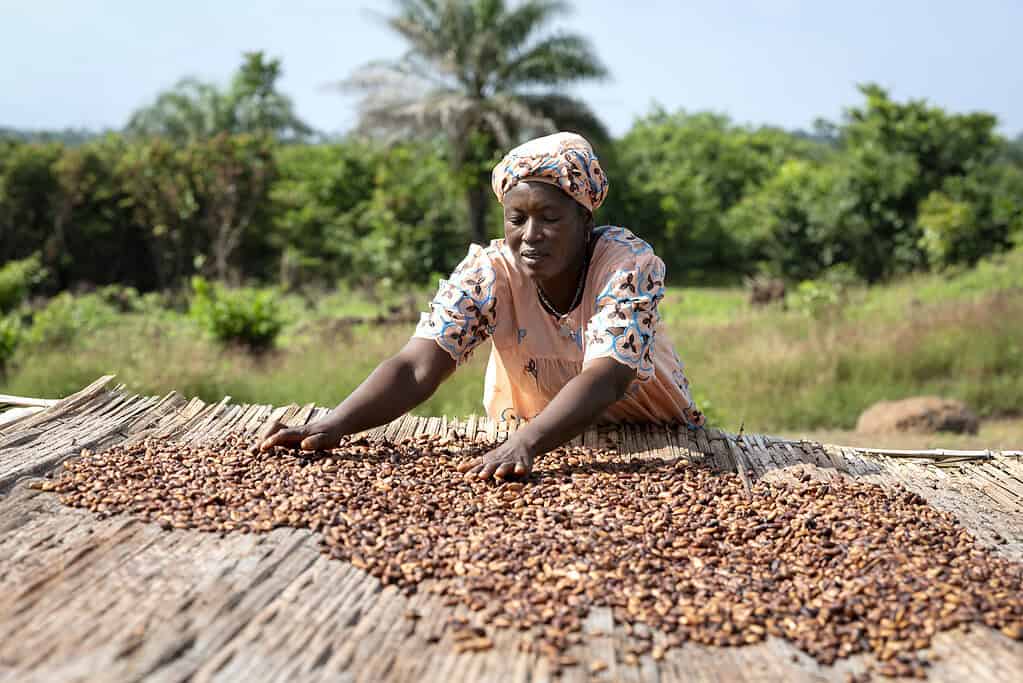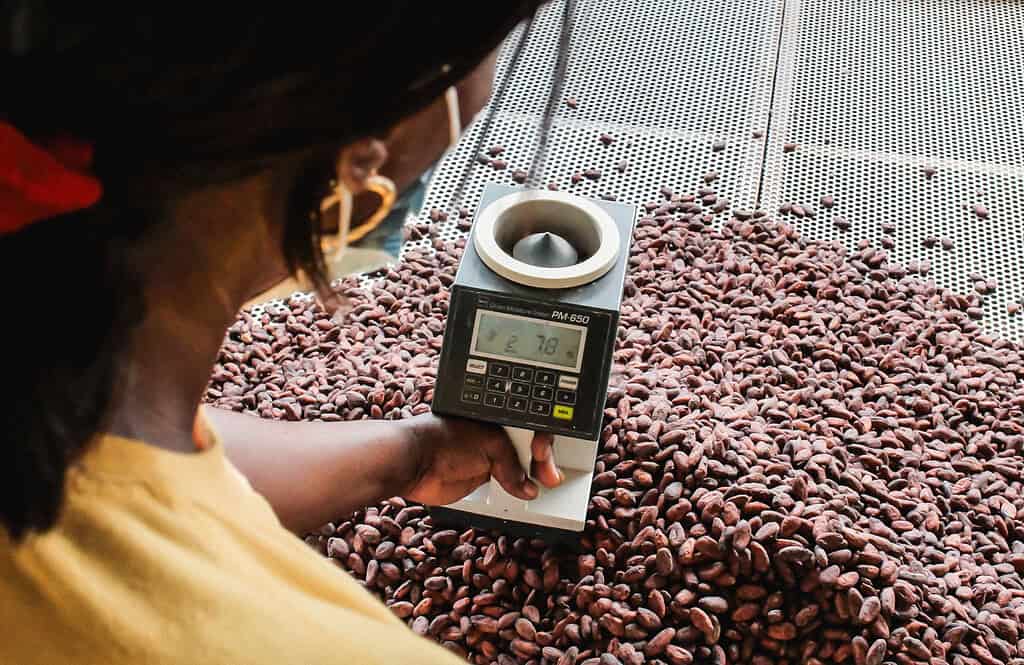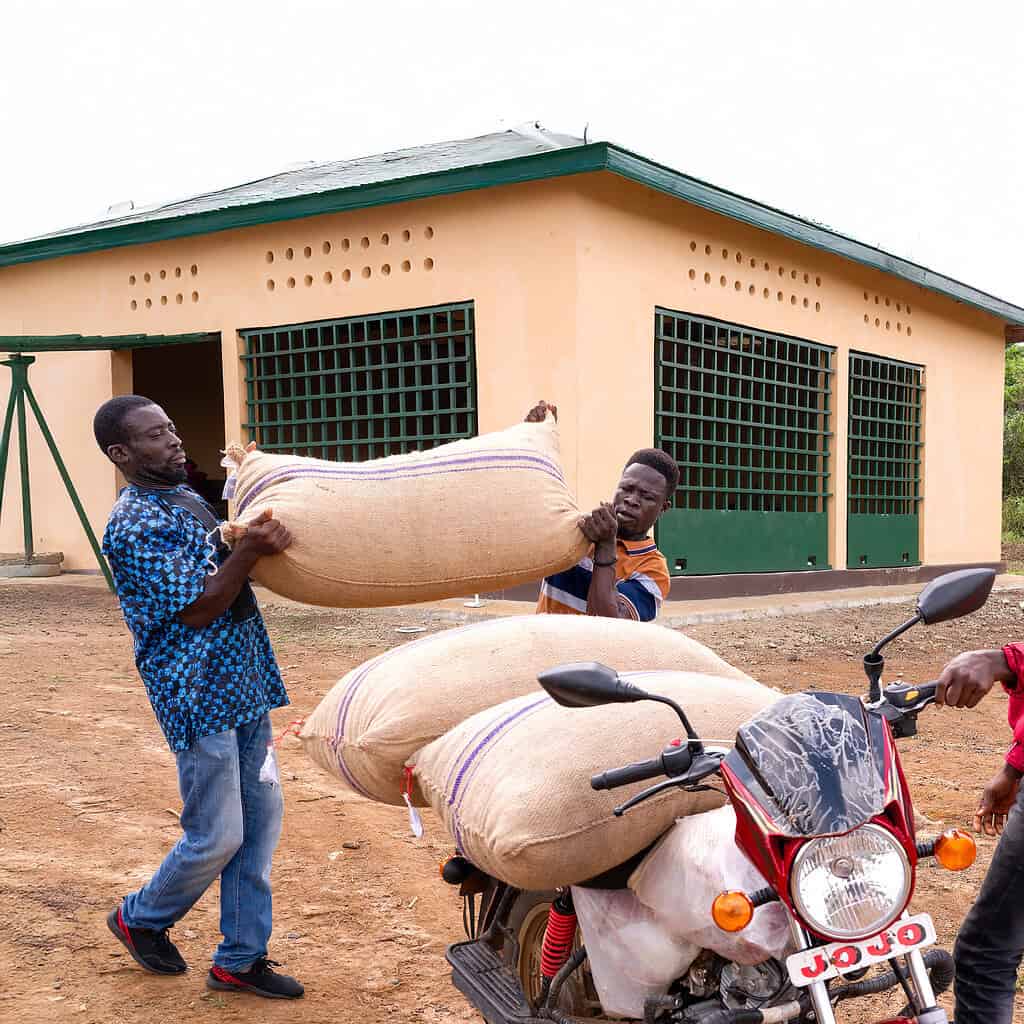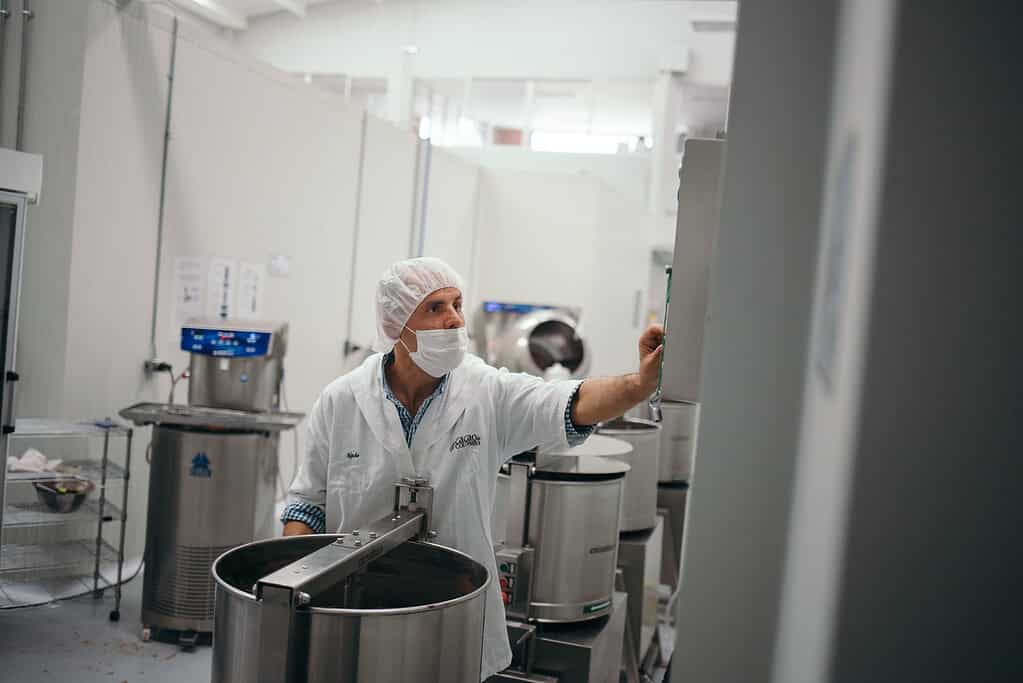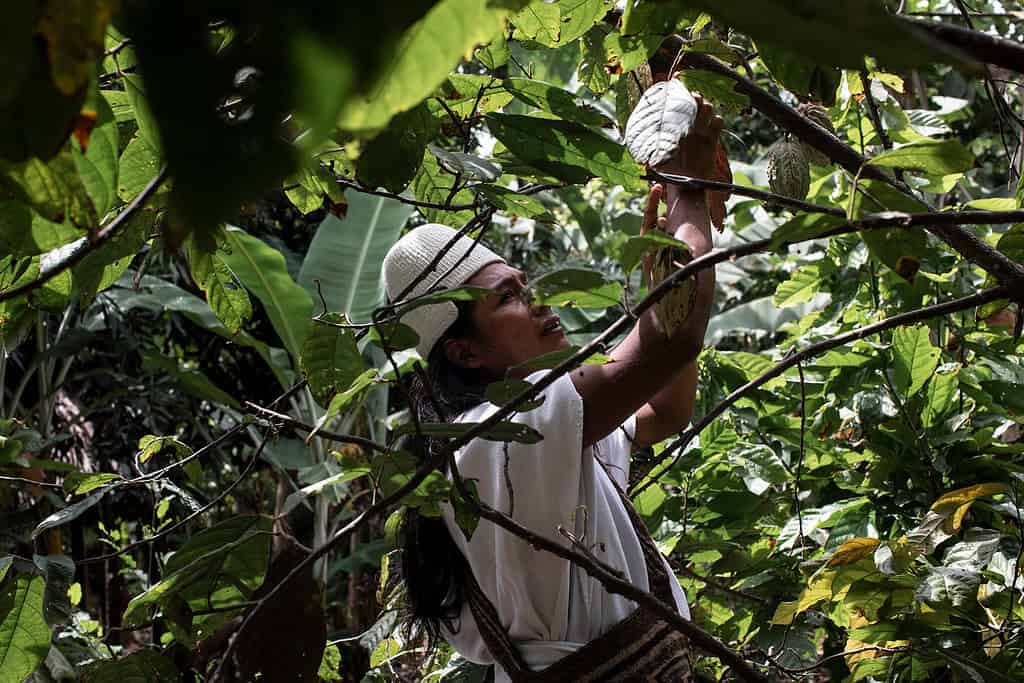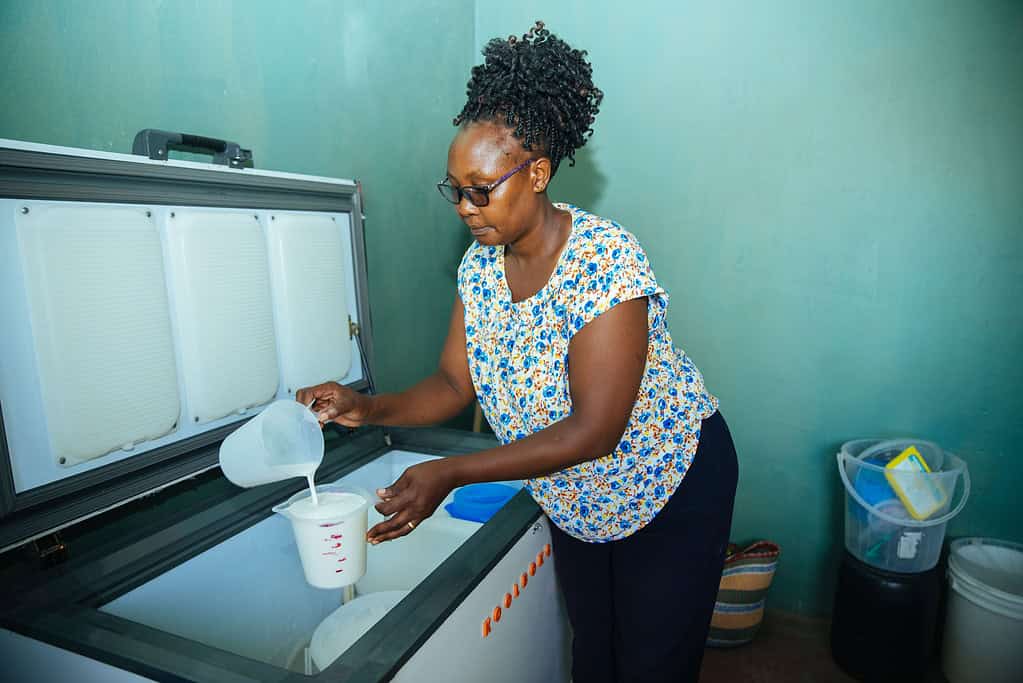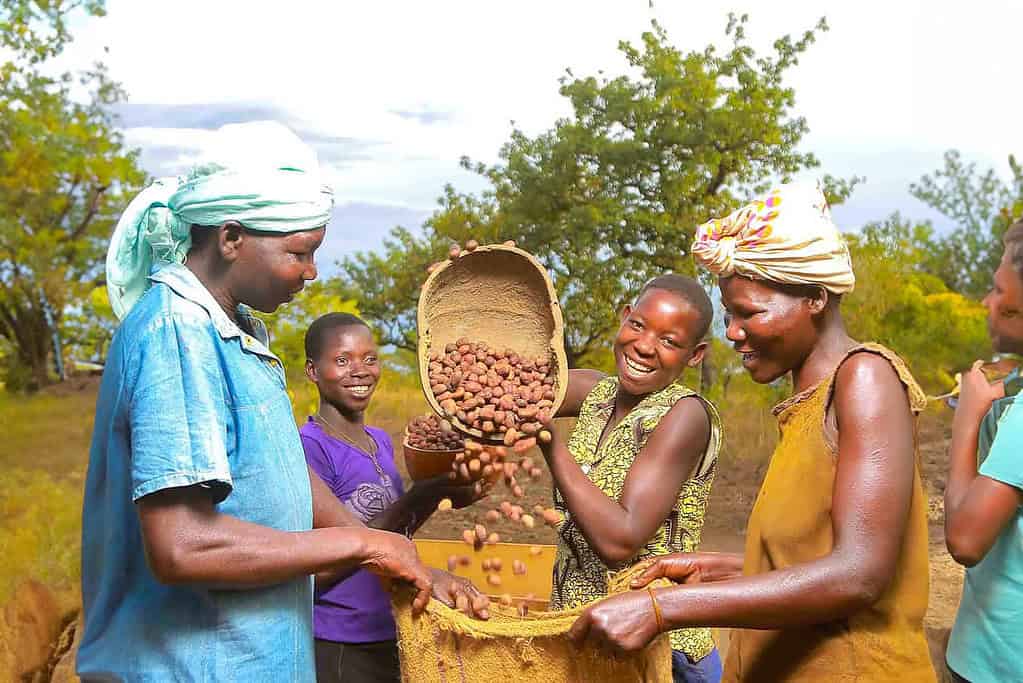Cocoa Disrupted: New blueprints for a sustainable industry
Innovative cocoa companies are building a more equitable and climate resilient supply chain that centers smallholder farmers every step of the way.
- Report
- Sustainable agriculture
- Cross region
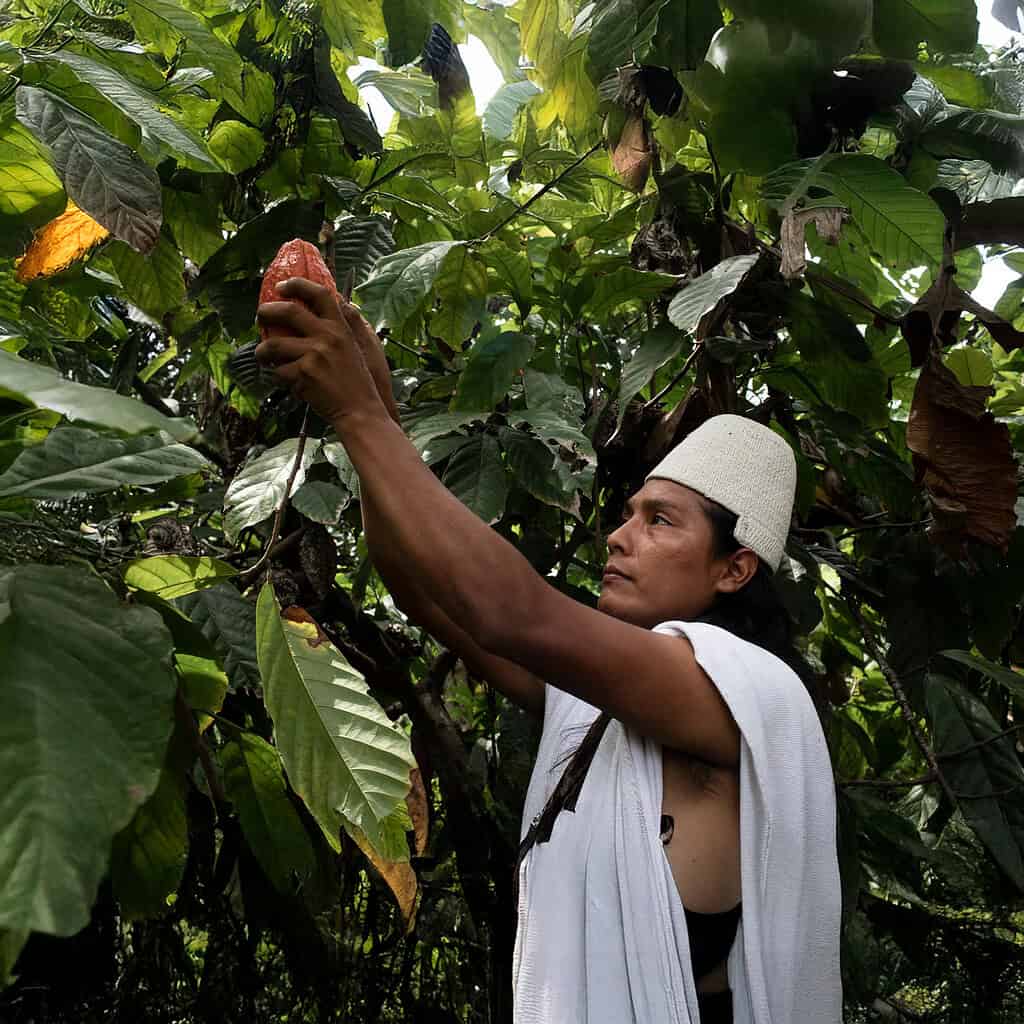
Over the last 30 years, as the variety and quality of chocolate available on store shelves has boomed, the price paid to farmers has stagnated. During this time, the world market price of cocoa had sat steadily at around $2,300 per metric ton. But in 2024, long-simmering trends in the industry came to a boil. Climate change and underinvestment in farms decimated cocoa supply, leading to a surge in global prices. Higher than average rainfall made it hard for farmers to care for their crops, and brought with it a host of tree diseases. As a result of years of low prices, farmers were unable to properly care for their farms or make the right investments, such as planting climate resilient trees or adopting water management infrastructure, that could improve the quality and quantity of their cocoa. While the surge in prices has benefitted some farmers in the short run, it has done nothing to address the structural inequities in the cocoa market. Further, the commodity cycle dictates that what goes up must come down.
The cocoa supply chain is ripe for change. There are many organizations working to address its numerous challenges, including improving the lives of cocoa farmers, reducing deforestation, and ending child poverty, among others. This report shows a specific type of intervention: how social enterprises are playing a crucial role in creating change, by building a more equitable and climate resilient supply chain that centers smallholder farmers every step of the way.
Download the report to learn more.
Companies committed to better farmer pay
Lessons for a more climate resilient and equitable value chain
Production
Agronomy and professionalization help to stabilize the quantity and improve the quality of cocoa.
Buying
Farmers need assured market access and fair prices, which they in turn can reinvest.
Exporting and trading
Transparency is critical to identify buyers willing to pay for poverty-free chocolate.
Manufacturing and distribution
Companies with bean-to-bar models capture more of the value of the final product for farmers.
“These enterprises are improving agricultural practices, making cocoa trading more predictable and transparent, and shifting more value back to the farmer.”
Virgilio Barco, Director of Acumen Latin America
Curious about our thoughts on cocoa and climate?
6 things we would change about the cocoa sector today
The cocoa sector is in crisis, with years of exploitation and climate challenges driving volatile prices and threatening the future of smallholder farmers. Six experts share their bold ideas for transforming the value chain and creating lasting change.
